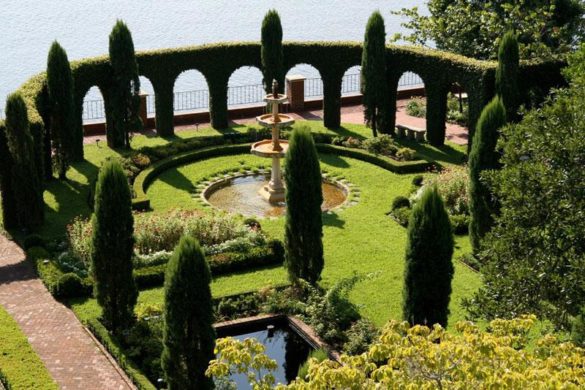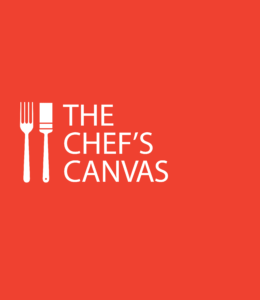
Photo by Agnes Lopez
Today’s recipe from “The Chef’s Canvas” is a gnocchi dish that was inspired by the Italian Garden!
Handmade Gnocchi with Sweet Pea Purée, Oyster Mushrooms, and Crispy Guanciale
Serves 4
Handmade Gnocchi
2 large Idaho potatoes (about 1 pound), peeled and cut into 2-inch pieces
2 cups all-purpose flour, plus more as needed for proper consistency
½ cup finely grated Parmesan
2 pinches white pepper
1 teaspoon sea salt
¼ teaspoon freshly grated nutmeg
1 large farm egg, whisked
Place potatoes in a large pot with enough water to cover by one inch. Bring to a boil, reduce to a simmer, and cook until fork tender. Rice potatoes through a food mill, distributing them evenly onto a large cutting board.
Allow riced potatoes to cool until lukewarm. This allows the excess moisture to evaporate.
Sift flour over potatoes in an even layer, which should be about the same height as the potatoes. Sprinkle Parmesan, white pepper, sea salt, and nutmeg on top of potatoes and flour. Fold dry ingredients together on top of cutting board using an offset spatula until well incorporated. Form mixture into a pile and create a well in the center. Pour whisked egg into the well and slowly incorporate into dry ingredients by hand until dough is crumbly and begins to come together. If dough is sticky and hard to work with, add more flour as needed. Form dough into a loaf and let rest for 30 minutes. Cut off small pieces of dough from the loaf and roll into ½-inch thick ropes. With a sharp knife, cut each rope into ½-inch pieces. Lightly pinch the center of each piece to create a small indention. Dust lightly with flour.*
Bring a large pot of water to a boil. Cook gnocchi in boiling water until they begin to float.
Continue to cook for 1 to 2 minutes more.
Strain and set aside until ready to use.
*At this point you can freeze gnocchi in a single layer on a sheet tray. Once frozen, gnocchi can be stored in an air-tight ziploc or vacuum-sealed bag in the freezer for up to 6 months. Cook frozen gnocchi following steps above.
Sweet Pea Purée
10 ounces fresh or frozen sweet peas
¾ cup heavy cream, warmed and divided
1 teaspoon kosher salt
1/8 teaspoon white pepper
Blanch peas in salted boiling water for about 1 to 2 minutes. Shock peas in an ice bath to stop the cooking process and preserve the the bright green color. Strain peas, and place in a blender. Add ½ cup hot heavy cream and purée until smooth. Stir in salt and white pepper and set aside. When ready to serve, slowly reheat the purée and remaining ¼ cup heavy cream over medium heat, stirring constantly, until well incorporated and hot.
Crispy Guanciale
4 ounces guanciale, pancetta, or bacon, very thinly sliced
Ask your local butcher or deli counter to slice the meat for you in order to get it paper thin.
Preheat oven to 250 degrees.
Arrange slices in a single layer on a parchment-lined sheet tray. Bake until crispy, 20 to 25 minutes, without allowing them to brown too much.
To finish and plate:
3 tablespoons canola oil, divided
8 ounces oyster mushrooms, cleaned and broken into individual pieces
4 cups Gnocchi, blanched
1 cup vegetable broth
½ cup grated grated Pecorino cheese, plus more for garnishing
2 tablespoons butter, softened
1 cup warm Sweet Pea Purée
Crispy Guanciale
8 snow peas, blanched and julienned on the bias
¼ cup assorted sweet herbs (basil, tarragon, dill), pea shoots, or microgreens, for garnishing
Kosher salt and freshly ground black pepper
Heat 1 tablespoon canola oil in a large nonstick skillet over medium-high heat. Add mushrooms and sauté until slightly brown and tender. Season to taste with salt and set aside on a plate lined with a paper towel. Wipe the pan clean if necessary.
Heat remaining 2 tablespoons canola oil over medium-high heat. When oil is hot, add gnocchi to the skillet and allow it to sear, without stirring, until golden brown. Flip gnocchi and sear on the other side.
Add sautéed mushrooms and cooked until warmed through. Add vegetable broth to the pan, cooking a few minutes more until heated through and gnocchi is plumped. Remove gnocchi from heat and swirl in the Pecorino and butter until both are melted and incorporated. Season with salt and pepper, to taste.
To serve, place ¼ cup of the warm Sweet Pea Puree’ in the bottom of a shallow bowl. Using a slotted spoon, place about 1 cup of the gnocchi and mushroom mixture on top of the purée. Top each bowl with Crispy Guanciale, julienned snow peas, and grated Pecorino. Garnish with sweet herbs, pea shoots, or microgreens and serve.
Pair with your choice of red or white wine – both pair perfectly with this complex and delicious dish – and enjoy!

Ellen Biddle Shipman
American, 1869 – 1950
The Italian Garden
1931
Built by Arthur and Ninah Cummer, named in memory of Margaret Baker Berg
Arthur and Ninah Cummer built the Italian Garden in 1931. The couple had recently returned from Italy, where Mrs. Cummer became enchanted by the Villa Gamberaia, just outside of Florence.
Designed by noted landscape architect Ellen Biddle Shipman (1869 – 1950), the Italian Garden echoes the design of Villa Gamberaia’s gardens, with its long pools, clipped hedges, and vine-covered gloriette. Although Shipman’s involvement in the Italian Garden initially faded from history, her role became apparent when a set of plans was discovered in the designer’s archives at Cornell University. This led to a restoration of the garden in the 1990s.
“There is a parallel between my appreciation of the Italian Garden’s beauty, its layout, symmetry, curves, arches, and lines, and a similarity to how I work with ingredients. I choose ingredients for a dish based on flavor first, and also for their color, texture, shape, and visual interest when plated together.
The garden is a creative, living expression of a framework that has grown with time and the seasons. While the garden was designed and planted many years ago, today one can enjoy its evolving beauty, much as a person can enjoy a classic dish with slightly new ways of interpreting the ingredients or techniques used to prepare it.
I spent many hours with my son when he was young in this garden. Together, we explored the variety of colors, shapes, textures, and smells, and I marveled at his delight in the discoveries he found. This is similar to how we as humans enjoy food and flavors. Ingredients bring out different nuances and the layers of aroma, texture, visual appeal, and taste can excite every sense.” – Tom Gray, Owner and Chef of Moxie Kitchen + Cocktails
“The Chef’s Canvas” is a cookbook created to honor the Museum’s permanent collection. The book is a treasure trove of artistic masterpieces, from the Museum’s galleries to kitchens throughout the diverse food scene in Jacksonville. This collaboration is like nothing the Museum has done before, and we look forward to sharing select recipes and the pieces of art that inspired them with you in The Chef’s Canvas Recipe Series.
“The Chef’s Canvas,” a work of art itself, was born of the idea that art fuels inspiration in all aspects of life, including in the kitchen. This unique collaboration allowed Jacksonville’s culinary experts to explore the collection and leave with the inspiration to create delicious, beautiful dishes, desserts, and cocktails. This series aims to give you a taste of Jacksonville’s culture, flavors, and artistry.



